Growing pumpkins can be a fun and rewarding experience, especially for beginners. Pumpkins are a great choice for new gardeners because they are relatively easy to grow and produce impressive, colorful fruits. Whether you have a large garden or a small space, you can successfully grow pumpkins with a little guidance.
Pumpkins are not only great for Halloween decorations, but they can also be used in many delicious recipes. From pumpkin pies to roasted seeds, the possibilities are endless. This guide will walk you through the entire process, from choosing the right variety to harvesting your pumpkins.
By following these simple steps, you’ll be on your way to growing your very own pumpkins. Let’s get started and enjoy the journey of growing these amazing plants!

Choosing the Right Pumpkin Variety
Pumpkins come in many shapes, sizes, and colors. Some are small and decorative, while others are large and perfect for carving or cooking. It’s important to choose a variety that suits your needs and the space you have available.
Recommended Beginner-Friendly Pumpkin Varieties
For beginners, it’s best to start with varieties that are easy to grow and manage. Here are a few recommendations:
- ‘Jack Be Little’: This is a small, ornamental pumpkin that is easy to grow. It’s perfect for limited spaces and can even be grown in containers.
- ‘Sugar Pie’: This medium-sized pumpkin is great for baking and cooking. It’s also relatively easy to care for and produces sweet, flavorful flesh.
- ‘Connecticut Field’: If you have more space and want a traditional pumpkin for carving, this variety is a good choice. It’s one of the most common and reliable pumpkins for beginners.
- ‘Cinderella’: Known for its unique shape and deep orange color, this variety is not only beautiful but also excellent for cooking. It’s a bit larger but still manageable for new gardeners.
Choosing the right variety sets the foundation for your pumpkin-growing adventure. Consider your space, purpose, and climate when selecting the variety that will work best for you. With the right choice, you’ll be set up for success in your pumpkin-growing journey.
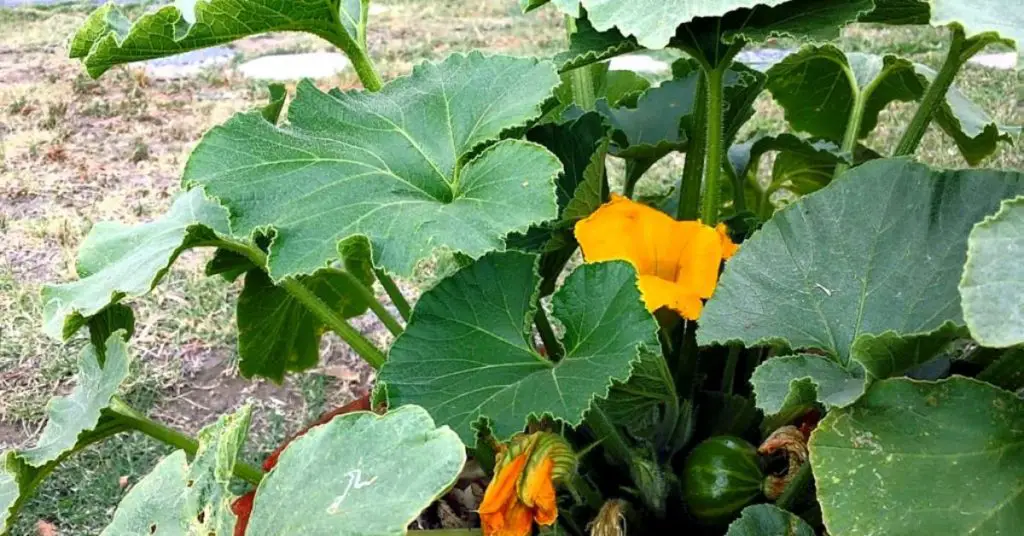
Preparing Your Garden
Selecting the Ideal Location for Planting Pumpkins
Pumpkins need a lot of sunlight to grow well. Choose a spot in your garden that gets at least 6-8 hours of direct sunlight each day. The more sunlight, the better your pumpkins will grow. Pumpkins also need plenty of space. If you’re planting in the ground, make sure to leave enough room for the vines to spread out, as they can grow quite long. If space is limited, consider growing smaller varieties or using trellises to train the vines vertically.
Preparing the Soil: Composition, pH Level, and Fertilization
Pumpkins thrive in rich, well-draining soil. Start by loosening the soil in your chosen spot to a depth of about 12-15 inches. This helps the roots grow deep and strong. Mix in plenty of organic matter, such as compost or well-rotted manure. This will provide the nutrients your pumpkins need to grow big and healthy.
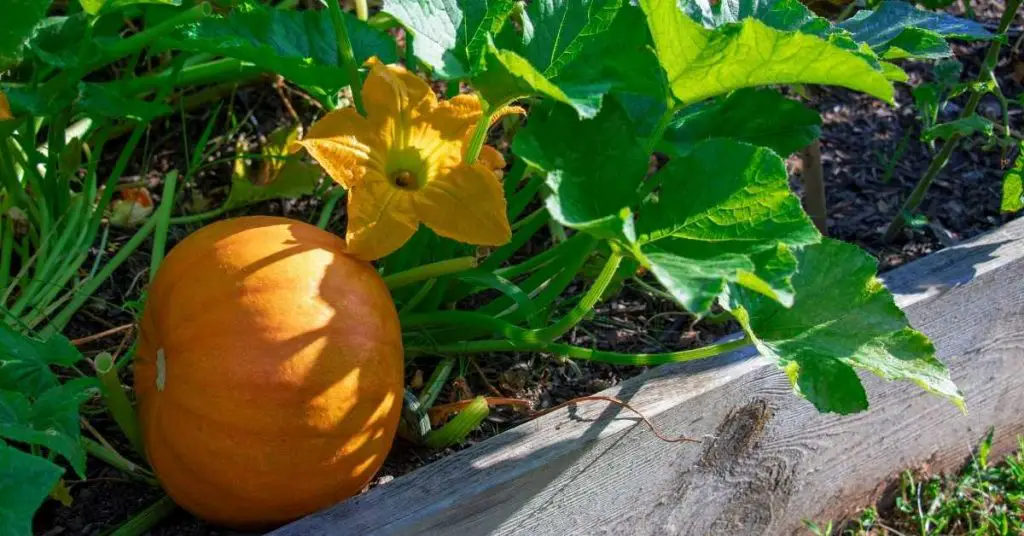
Check the soil pH with a simple test kit from a garden center. Pumpkins prefer a slightly acidic to neutral pH, around 6.0 to 7.5. If the pH is too low (too acidic), add some lime to raise it. If it’s too high (too alkaline), add sulfur to lower it.
About a week before planting, apply a balanced fertilizer (such as 10-10-10) to the soil. Follow the instructions on the package for the correct amount. This will give your pumpkin plants a good start by ensuring they have all the essential nutrients they need from the beginning.
By carefully preparing your garden, you create the perfect environment for your pumpkins to thrive. Good soil and the right location are key to a successful pumpkin harvest.
Planting Pumpkins
Starting from Seeds vs. Purchasing Seedlings
You have two main options when it comes to planting pumpkins: starting from seeds or purchasing seedlings. Starting from seeds can be rewarding and allows you to choose from a wider variety of pumpkins. However, it takes a bit longer. Purchasing seedlings gives you a head start and can be more convenient, especially if you’re new to gardening.
Step-by-Step Guide to Planting Pumpkin Seeds and Seedlings
Planting Seeds:
- Timing: Plant pumpkin seeds outdoors after the last frost date in your area. The soil should be warm, ideally around 70°F.
- Sowing: Plant seeds about 1 inch deep in the soil. Place 2-3 seeds per hole, spacing holes about 4-6 feet apart. If planting in rows, space the rows 6-10 feet apart.
- Watering: Water the soil gently but thoroughly after planting. Keep the soil consistently moist but not waterlogged.
Planting Seedlings:
- Timing: Transplant seedlings after the last frost when the soil has warmed up.
- Preparation: Dig holes that are slightly larger than the root balls of the seedlings. Space the holes about 4-6 feet apart.
- Transplanting: Carefully remove the seedlings from their containers. Place each seedling into a hole and fill in with soil, pressing gently around the base.
- Watering: Water the seedlings immediately after planting. Continue to water regularly, keeping the soil moist.
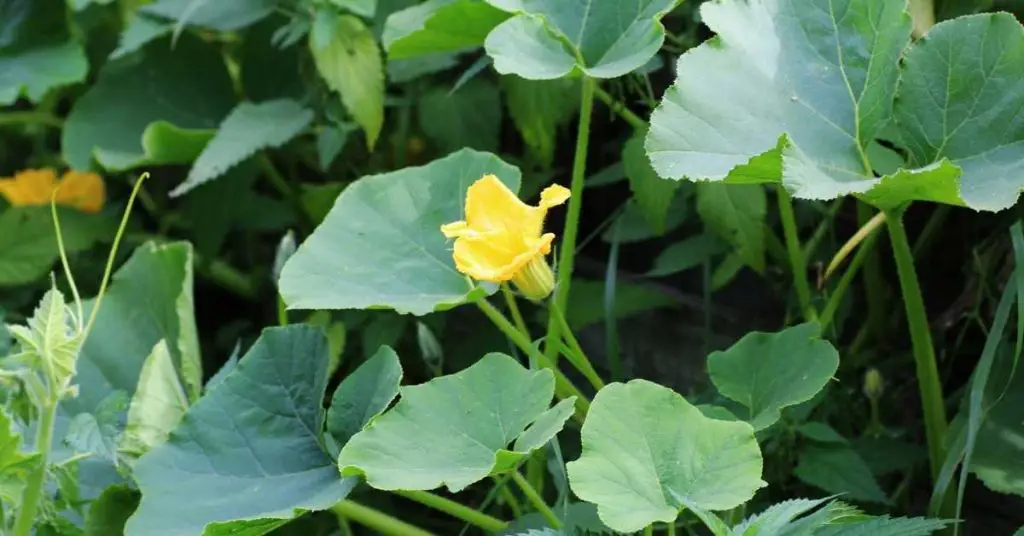
Ideal Planting Time Based on Climate
The best time to plant pumpkins depends on your local climate. In general, pumpkins need 75-100 days of frost-free weather to mature. In cooler climates, start seeds indoors 3-4 weeks before the last frost date.
In warmer climates, you can plant seeds directly in the garden after the danger of frost has passed. Always check your local frost dates and soil temperature to ensure the best start for your pumpkin plants.
By following these planting steps, you’ll give your pumpkins the best chance to grow strong and healthy. Whether starting from seeds or seedlings, proper timing and care are essential for a successful pumpkin harvest.
Caring for Your Pumpkin Plants
Watering Needs and Schedule
Pumpkins need a lot of water to grow well. Keep the soil consistently moist but not waterlogged. Water your pumpkin plants deeply and regularly, about 1-2 inches of water per week. This means watering them thoroughly once or twice a week, depending on the weather.
During very hot or dry periods, you might need to water them more often. Always water at the base of the plant to keep the leaves dry and reduce the risk of disease.
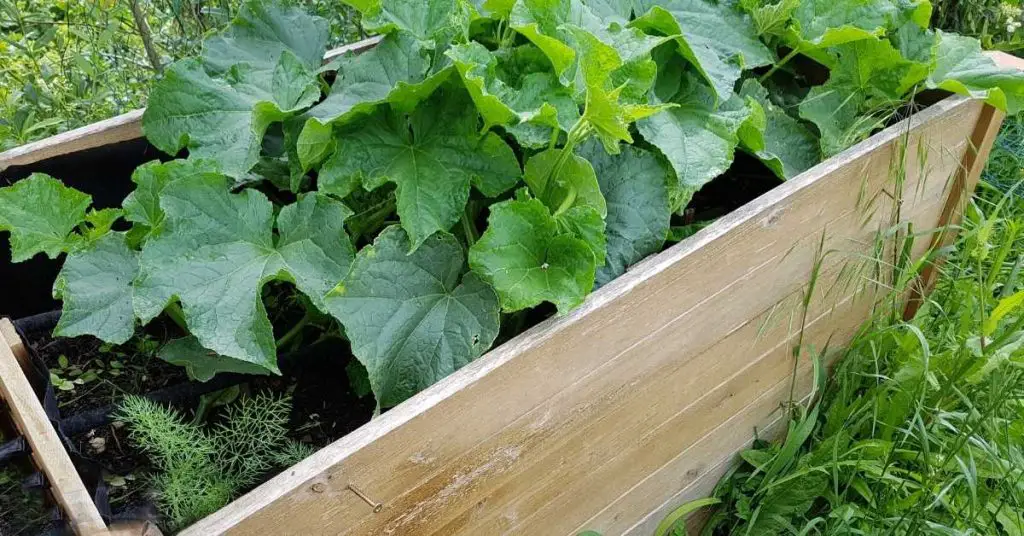
Fertilization and Soil Maintenance
Pumpkins are heavy feeders and need plenty of nutrients to grow large and healthy. Fertilize your pumpkin plants every 2-3 weeks with a balanced fertilizer. You can use a 10-10-10 fertilizer or a fertilizer specially formulated for vegetables.
Follow the instructions on the package for the correct amount to use. In addition to regular fertilization, add a layer of compost or well-rotted manure around the base of the plants to provide a steady supply of nutrients.
Supporting and Training Vines
Pumpkin vines can grow long and sprawling, so it’s important to support and train them to make the best use of your garden space. If you have limited space, consider using a trellis or garden stakes to train the vines vertically.
This helps to keep the fruit off the ground, reducing the risk of rot and pest damage. Use soft ties or garden twine to gently secure the vines to the supports. For larger varieties, you might need to provide extra support for the growing pumpkins by using slings made from old T-shirts or pantyhose.
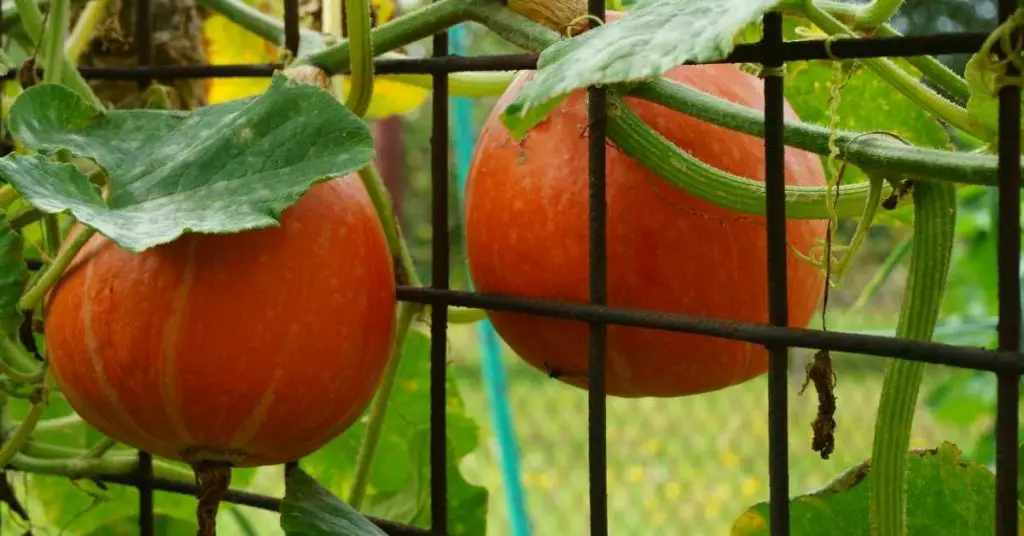
Weeding and Mulching
Keep the area around your pumpkin plants free from weeds, as they compete for water and nutrients. Mulching can help suppress weeds and retain soil moisture. Apply a layer of mulch, such as straw, grass clippings, or shredded leaves, around the base of your plants.
This not only helps with weeds and moisture but also keeps the soil temperature consistent.
Monitoring and Pruning
Regularly check your pumpkin plants for signs of pests and diseases. Remove any dead or yellowing leaves to improve air circulation and reduce the risk of disease. If your plants are growing too many vines, you can prune some of the side shoots to focus the plant’s energy on producing fruit. Just be careful not to prune too much, as the leaves are important for photosynthesis.
By providing consistent care and maintenance, your pumpkin plants will thrive and produce healthy, vibrant fruit. Regular watering, fertilization, and proper vine management are essential to growing strong and productive pumpkin plants.
Managing Pests and Diseases
Common Pests and How to Deal with Them
Pumpkin plants can be affected by a variety of pests. Aphids are tiny insects that suck sap from the leaves, causing them to curl and yellow. To control aphids, spray the leaves with a mixture of water and a few drops of dish soap, or use insecticidal soap.
Squash bugs are brownish-black insects that can cause the leaves to wilt. Hand-pick them off the plants or use a garden hose to spray them off. Cucumber beetles are yellow-green with black spots or stripes and can transmit diseases. Use sticky traps or insecticidal soap to manage them.

Recognizing and Treating Common Pumpkin Diseases
Pumpkins can also be susceptible to several diseases. Powdery mildew appears as white, powdery spots on the leaves and stems. To prevent it, ensure good air circulation around your plants and avoid overhead watering.
If you notice powdery mildew, remove the affected leaves and apply a fungicide. Downy mildew causes yellow patches on the leaves that eventually turn brown. Prevent it by keeping the foliage dry and ensuring proper spacing between plants. If downy mildew appears, remove affected leaves and treat with a fungicide.
Root rot can occur if the soil is too wet. Ensure your soil has good drainage and avoid overwatering. If you suspect root rot, reduce watering and improve soil drainage.
Bacterial wilt, spread by cucumber beetles, causes plants to wilt and die suddenly. Remove and destroy infected plants to prevent the spread.
Organic and Chemical Control Methods
For organic pest control, consider using companion planting. Planting marigolds or nasturtiums near your pumpkins can help repel pests. Beneficial insects like ladybugs and lacewings can be attracted to your garden to help control aphids and other pests. Use row covers to protect young plants from insect damage.
Chemical control methods include using insecticidal soaps, neem oil, and fungicides. Always follow the instructions on the label and use these products as a last resort, after trying organic methods first.
By regularly inspecting your plants and taking action at the first sign of pests or disease, you can keep your pumpkin plants healthy and thriving. Proper pest and disease management is key to a successful pumpkin harvest.
Pollination and Fruit Development
Understanding Pumpkin Pollination
Pollination is essential for pumpkins to produce fruit. Pumpkins have both male and female flowers. Male flowers appear first and have a thin stem, while female flowers have a small, swollen base that will develop into a pumpkin after pollination. Bees and other pollinators transfer pollen from male to female flowers, enabling fruit development.
Encouraging Natural Pollinators
To attract natural pollinators to your garden, plant flowers that bees love, such as marigolds, sunflowers, and zinnias, near your pumpkin patch. Avoid using pesticides, especially during the flowering period, as they can harm bees and other beneficial insects.
Providing a shallow dish of water with pebbles in it can also help attract bees and give them a place to drink.

Hand-Pollination Techniques
If natural pollinators are scarce or you want to ensure pollination, you can hand-pollinate your pumpkin flowers.
Here’s how to do it:
- Identify a male flower by its thin stem and carefully remove it from the plant.
- Peel back the petals to expose the stamen covered in pollen.
- Locate a female flower by its swollen base and gently brush the stamen from the male flower onto the center of the female flower.
- Repeat this process with multiple flowers to increase the chances of successful pollination.
Monitoring Fruit Development
After successful pollination, the female flowers will start to develop into pumpkins. It’s important to monitor the growth of the fruit regularly. Thin out any excess fruits early on, leaving only a few per plant. This helps the plant focus its energy on developing fewer but larger and healthier pumpkins.
Check the pumpkins for any signs of pests or diseases and take action promptly to prevent damage. Ensure the developing pumpkins are supported off the ground if necessary, using slings made from old T-shirts or pantyhose to prevent rot and pest damage.
By understanding and aiding the pollination process and closely monitoring fruit development, you can ensure a healthy and bountiful pumpkin harvest. Proper pollination and care are essential for growing big, beautiful pumpkins.
Harvesting Your Pumpkins
Signs That Pumpkins Are Ready to Be Harvested
Knowing when to harvest your pumpkins is crucial for getting the best quality fruit. Pumpkins are ready to be harvested when they have reached their full color and the rind is hard. A good test is to press your fingernail into the skin; if it resists puncture, the pumpkin is mature. The stem will also begin to dry and harden. The leaves around the pumpkin may start to die back, indicating that the fruit is ready.
Proper Harvesting Techniques
To harvest your pumpkins, use a sharp knife or pruning shears to cut the pumpkin from the vine. Leave a few inches of stem attached to the pumpkin, as this helps prevent rot and extends the storage life. Handle the pumpkins gently to avoid bruising or damaging the skin. It’s best to harvest pumpkins on a dry, sunny day to reduce the risk of rot.
Curing the Pumpkins
After harvesting, pumpkins need to be cured to toughen their skins and improve storage life. Place the pumpkins in a warm, sunny location for about 10 days. The ideal curing temperature is between 80-85°F (27-29°C). During this time, any small scratches or cuts on the skin will heal, and the pumpkins will be better prepared for long-term storage.

Storing Pumpkins
Once cured, store your pumpkins in a cool, dry place with good ventilation. The ideal storage temperature is between 50-55°F (10-13°C). Keep the pumpkins off the ground on shelves or wooden pallets to allow air circulation around them.
Check the pumpkins regularly for any signs of decay and remove any that show signs of spoilage to prevent it from spreading to the others. Properly stored pumpkins can last for several months, providing you with fresh produce long after the growing season has ended.
By following these harvesting and storage techniques, you can enjoy your pumpkins for an extended period. Proper harvesting, curing, and storage are essential to maintaining the quality and longevity of your pumpkin harvest.
Storing and Using Pumpkins
Curing and Storing Pumpkins
After harvesting, pumpkins need to be cured to toughen their skins and extend their storage life. Place the pumpkins in a warm, sunny location for about 10 days. The ideal curing temperature is between 80-85°F (27-29°C). This process allows the skin to harden and any small scratches or cuts to heal, which helps prevent rot during storage.
Once cured, store your pumpkins in a cool, dry place with good ventilation. The ideal storage temperature is between 50-55°F (10-13°C). Keep the pumpkins off the ground on shelves or wooden pallets to allow air circulation around them.
Check the pumpkins regularly for any signs of decay and remove any that show signs of spoilage to prevent it from spreading to the others. Properly stored pumpkins can last for several months, providing you with fresh produce long after the growing season has ended.
Ideas for Using and Enjoying Your Pumpkin Harvest
Pumpkins are incredibly versatile and can be used in a variety of delicious recipes.
Here are a few ideas to get you started:
- Pumpkin Pie: A classic favorite, perfect for holiday celebrations. Use the flesh of your homegrown pumpkins to make a delicious, homemade pumpkin pie.
- Roasted Pumpkin Seeds: Don’t throw away the seeds! Clean and roast them with a bit of salt and oil for a healthy and tasty snack.
- Pumpkin Soup: A warm, comforting soup made from pureed pumpkin is perfect for chilly days. Add some cream and spices for extra flavor.
- Pumpkin Bread or Muffins: Bake moist and flavorful pumpkin bread or muffins. These make great snacks or breakfast treats.
- Pumpkin Puree: Make your own pumpkin puree by cooking and blending the flesh. Use it in various recipes like pancakes, waffles, or even as a baby food.
- Pumpkin Decor: Use smaller pumpkins as decorations for Halloween or Thanksgiving. Carve them into jack-o’-lanterns or use them in centerpieces.
By curing and storing your pumpkins properly, you can enjoy the fruits of your labor for months. Whether you’re cooking, baking, or decorating, homegrown pumpkins add a special touch to your meals and home. Get creative and enjoy all the wonderful ways to use your pumpkin harvest!
Frequently Asked Questions (FAQs)
What Is the Best Time to Plant Pumpkins?
The best time to plant pumpkins is after the last frost date in your area when the soil has warmed up to at least 70°F. This usually means late spring to early summer. Pumpkins need 75-100 days of frost-free weather to mature, so plan accordingly based on your local climate.
How Much Space Do Pumpkin Plants Need?
Pumpkin plants need plenty of space to spread out. Each plant should be spaced about 4-6 feet apart, with rows spaced 6-10 feet apart. If you have limited space, consider growing bush varieties or using trellises to train the vines vertically.
What Should I Do If My Pumpkin Leaves Turn Yellow?
Yellowing leaves can be a sign of overwatering, nutrient deficiency, or pest infestations. Check the soil moisture and ensure good drainage. Apply a balanced fertilizer to address nutrient deficiencies. Inspect the plants for pests like aphids and treat them promptly.
How Can I Protect My Pumpkins from Pests?
Protect your pumpkins from pests by regularly inspecting the plants and using organic or chemical control methods as needed. Companion planting with flowers like marigolds can help repel pests. Use insecticidal soaps or neem oil to treat infestations, and consider using row covers to protect young plants.
When Should I Start Harvesting My Pumpkins?
Pumpkins are ready to harvest when they have reached their full color, and the rind is hard. The stem will also begin to dry and harden. Use a sharp knife or pruning shears to cut the pumpkins from the vine, leaving a few inches of stem attached.
How Long Do Pumpkins Last After Harvesting?
Properly cured and stored pumpkins can last for several months. After harvesting, cure the pumpkins in a warm, sunny location for about 10 days. Then store them in a cool, dry place with good ventilation. Check them regularly for any signs of decay.
Can I Grow Pumpkins in Containers?
Yes, you can grow pumpkins in containers, especially smaller varieties. Choose a container that is at least 20-25 gallons in size with good drainage. Follow the same care guidelines as for ground planting, ensuring regular watering and proper fertilization.
What Are the Best Conditions for Pumpkin Growth?
Pumpkins thrive in full sun, well-draining soil, and with plenty of water. They prefer slightly acidic to neutral soil (pH 6.0-7.5) enriched with organic matter. Regular fertilization and proper spacing help ensure healthy growth and productive plants.
How Do I Ensure My Pumpkins Are Pollinated?
To ensure your pumpkins are pollinated, attract natural pollinators like bees by planting flowers nearby. Avoid using pesticides during the flowering period. You can also hand-pollinate by transferring pollen from male to female flowers using a small paintbrush or cotton swab.
What Can I Do with My Pumpkins After Harvesting?
There are many ways to enjoy your pumpkin harvest. Use them in cooking and baking, such as making pumpkin pie, soup, bread, or muffins. Roast the seeds for a healthy snack. Small pumpkins can be used as decorations for Halloween or Thanksgiving. You can also make pumpkin puree for various recipes.
Conclusion
Growing pumpkins can be a fun and rewarding experience, especially for beginners. By following the steps outlined in this guide, you can successfully grow healthy and productive pumpkin plants. Start by choosing the right variety and preparing your garden with proper soil and location. Plant your seeds or seedlings carefully, and provide consistent care through watering, fertilizing, and training the vines.
Keep an eye out for pests and diseases, and take action to manage them promptly. Ensure proper pollination to set fruit, and monitor the development of your pumpkins. When it’s time to harvest, handle the pumpkins carefully and follow proper curing and storage techniques to enjoy your harvest for months to come.
Remember, gardening is a learning process, and every season offers new opportunities to improve and grow. With a bit of effort and attention, you can enjoy the satisfaction of growing your own pumpkins, whether for cooking, decorating, or simply the joy of gardening.
Happy gardening, and may your pumpkin patch be bountiful!




